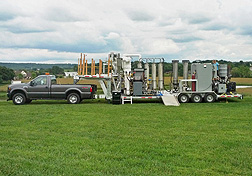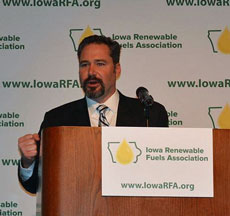During the 10th Annual Iowa Renewable Fuels Summit, Iowa Lt. Governor Kim Reynolds, along with Mike Naig, deputy secretary of agriculture, highlighted the new “Fueling Our Future 100” program. In round one, the program has allocated $2.49 million dollars to help Iowa gas retailers install 107 blender pumps and 8 underground storage tanks to store high blends of ethanol. Naig said applications for the 2nd round of funding are due February 1, 2016.
 Reynolds noted that each blender pump installed benefits Iowa’s agricultural economy and supports good jobs for Iowa families. Adding blender pumps also gives consumers more choices at the pump, she added.
Reynolds noted that each blender pump installed benefits Iowa’s agricultural economy and supports good jobs for Iowa families. Adding blender pumps also gives consumers more choices at the pump, she added.
“Thanks to the support of our federal partners at the USDA, the ‘Fueling our Future 100’ program is going to ensure that consumers in our state have greater access to biofuels. We’re appreciative of companies like Five Star Coop, New Century Farm Services, Kum & Go, STAR Energy and Three Rivers Farm Services Company for their efforts in continuing to put Iowa on the forefront of an even greater renewable future.”
The Fueling Our Future 100 received a $5 million competitive grant from the United States Department of Agriculture (USDA) Biofuel Infrastructure Partnership (BIP) program. All funds must be matched by non-federal funds, including up to $2.5 million from the Iowa Renewable Fuels Infrastructure program. The fueling sites applying for assistance will also be required to provide a minimum of $2.5 million.
Listen to Iowa Lt. Governor Kim Reynold’s remarks here: IA Lt Gov Kim Reynolds' Remarks
Listen to Iowa Ag Deputy Secretary Mike Naig’s remarks here: Mike Naig's Remarks









